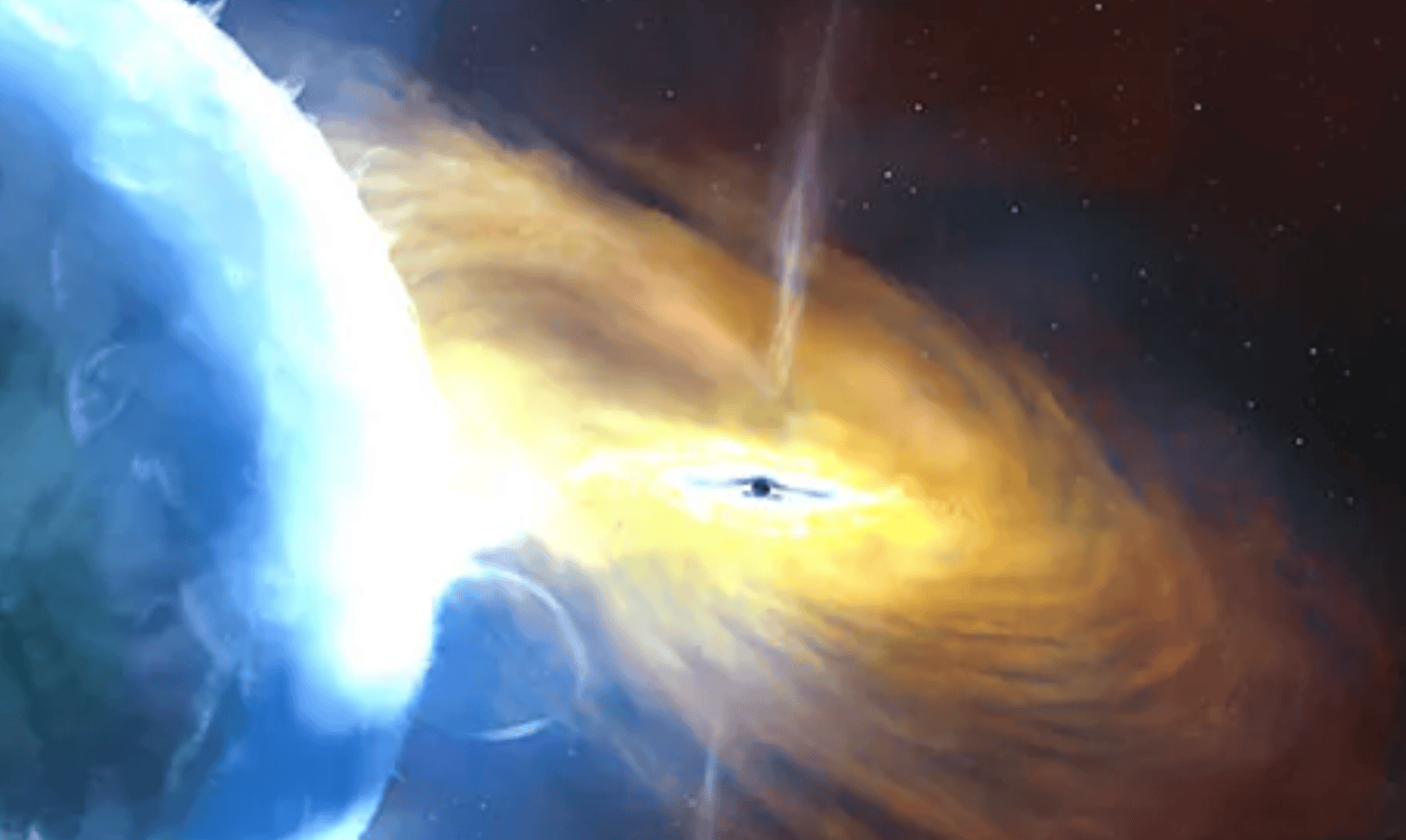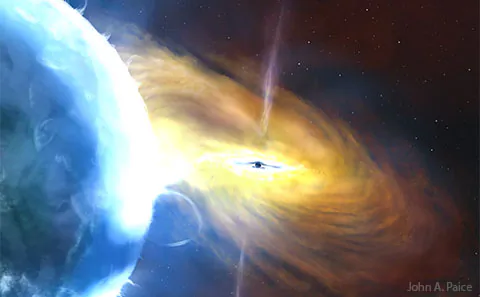Astronomers from the University of Southampton say they have discovered the most massive cosmic explosion ever recorded, which has continued to put out a terrifying amount of energy for the last three years.
The explosion, known as AT2021lwx, is more than ten times brighter than any known supernova (an exploding star) and three times brighter than the brightest tidal disruption event (when a star falls into a supermassive black hole). It is reportedly 100 times the size of our solar system.
The explosion has been visible for over three years, much longer than most supernovae, and is located nearly 8 billion light-years away. Most supernovae last only a few months, but astronomers say this one is still being detected by a network of telescopes.
Lead researcher Dr. Philip Wiseman said the team came across it by chance when their search algorithm flagged it during a search for a type of supernova.
“Most supernovae and tidal disruption events only last for a couple of months before fading away. For something to be bright for two plus years was immediately very unusual,” he said in a statement.
The explosion was first detected in 2020 by the Zwicky Transient Facility in California and subsequently picked up by the Asteroid Terrestrial-impact Last Alert System in Hawaii. These facilities survey the night sky to detect transient objects that rapidly change in brightness, indicating cosmic events such as supernovae. They also detect asteroids and comets.
The team of astronomers, whose research was published in the Monthly Notices of the Royal Astronomical Society, believes the explosion was caused by a massive cloud of gas that was violently disrupted by a supermassive black hole.
The gas cloud is thought to possibly be thousands of times larger than our sun.
This disruption sent shockwaves through the remnants of the cloud and into a large dusty ‘doughnut’ surrounding the black hole. This is a rare event itself, and still, nothing on this scale has ever been witnessed before.
Astronomers witnessed a separate gamma-ray burst last year, the brightest on record, known as GRB 221009A. It was brighter than AT2021lwx, however, it lasted for a fraction of the time. This means that the overall energy released by the AT2021lwx explosion is far greater.
Analyzing and Measuring Distance
The team of astronomers investigated the cosmic explosion using several separate telescopes; including the Neil Gehrels Swift Telescope, which is a collaboration between NASA, the UK, and Italy; the New Technology Telescope, which is operated by the European Southern Observatory in Chile; and the Gran Telescopio Canarias in La Palma, Spain.
By analyzing the spectrum of the light, the team was able to measure the distance to the object and calculate the brightness of the object at its source. They found that the explosion is as bright as a quasar, which is a supermassive black hole with a constant flow of gas falling onto it at high velocity.
However, the team notes that the brightness of a quasar usually varies over time, while this explosion was sudden and without comparison in its brightness. Prof. Mark Sullivan, also of the University of Southampton and another co-author of the paper, explained.
“With a quasar, we see the brightness flickering up and down over time,” he said. “But looking back over a decade, there was no detection of AT2021lwx, then suddenly it appears with the brightness of the brightest things in the universe, which is unprecedented.”
The team believes that the most feasible explanation for the explosion is an extremely large cloud of gas or dust that has come off course from its orbit around the black hole and been sent flying in.
They will now collect more data on the explosion, including measuring different wavelengths, to reveal the object’s surface and temperature and to learn more about the underlying processes taking place.
The team was able to determine the distance of the object by analyzing the spectrum of light—splitting it up its wavelengths and measuring its different absorption and emission features.
“Once you know the distance to the object and how bright it appears to us, you can calculate the brightness of the object at its source. Once we’d performed those calculations, we realized this is extremely bright,” said Prof. Sebastian Hönig from the University of Southampton, who co-authored the research.
The astronomers hope to discover more events like this using new facilities such as the Vera Rubin Observatory’s Legacy Survey of Space and Time, which is expected to come online in the coming years.
“It could be that these events, although extremely rare, are so energetic that they are key processes to how the centers of galaxies change over time,” Wiseman added.
Disclaimer: We at Prepare for Change (PFC) bring you information that is not offered by the mainstream news, and therefore may seem controversial. The opinions, views, statements, and/or information we present are not necessarily promoted, endorsed, espoused, or agreed to by Prepare for Change, its leadership Council, members, those who work with PFC, or those who read its content. However, they are hopefully provocative. Please use discernment! Use logical thinking, your own intuition and your own connection with Source, Spirit and Natural Laws to help you determine what is true and what is not. By sharing information and seeding dialogue, it is our goal to raise consciousness and awareness of higher truths to free us from enslavement of the matrix in this material realm.
 EN
EN FR
FR



























